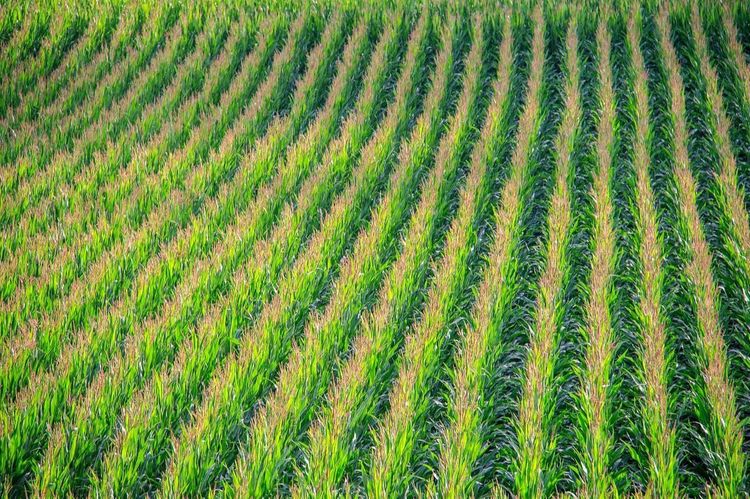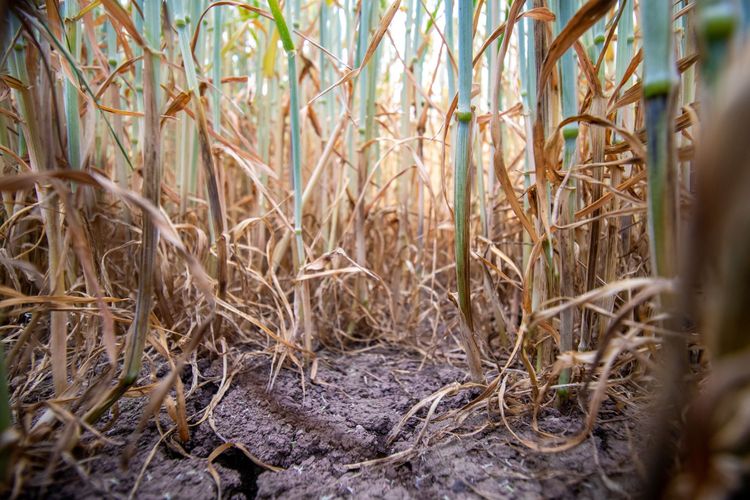Southern Africa's Drought
Background
The Southern African monsoon is a weather pattern that researchers rarely identify as an independent monsoon; instead it is often bucketed under other names and patterns, such as the East Africa monsoon. Southern Africa’s monsoon-like weather pattern typically develops in October and November and ends by March, which naturally aligns with the region’s major cereal planting season.
One of the main components of this weather pattern is the placement of the Angola Low. The Angola Low, a semipermanent low-pressure system, interacts with both the Mascarene High (a semi-permanent high-pressure system off Madagascar’s eastern coast), and the Inter-Tropical Convergence Zone (ITCZ). The ITCZ is an equatorial low-pressure belt, or an area characterized by constant thunderstorm activity, which is the main source of rainfall for much of West and Central Africa.
If the Angola Low is too weak in magnitude, or too far west or east, it can lead to the displacing of the subtropical jet stream. The subtropical jet stream is a narrow current of quickly-moving air between boundaries of hot and cold air. While each hemisphere has a subtropical jet, that of the Southern Hemisphere is typically south of South Africa, and the jetstream’s location is an extremely important factor for storm generation across the region. The stream’s dislocation was one of the main drivers behind the infamous drought of 1992.
If you ask a Southern African how this drought compares to those in the past, the drought of 1992 is likely to be his or her benchmark for comparison. The drought of 1992 ravaged a significant portion of Eastern and Southern Africa, devastating crop yields from South Africa to Ethiopia. The lack of rain, followed by high temperatures in South Africa and Zimbabwe, prompted aid agencies to adjust allocations to those two countries, which had historically been relatively self-sufficient. That year, Zimbabwe imported over 1.2 million tonnes of corn, or about $238 million of the crop. South Africa, the region’s largest producer and exporter of corn, imported over 3 million tonnes.
2014/15: The Year of Droughts and Floods
The past year has been a trying one for Southern African farmers. For the first several weeks of the rainy season, running from early November 2014 until mid-December, Malawi, Zambia, Mozambique, Zimbabwe, and Madagascar received worryingly low rainfall. Some parts of these countries recorded less than 25 percent of the normal precipitation. Ground conditions quickly deteriorated as soils became parched, and concerns over poor crop harvests became widespread. Anxious farmers across the region hoped and prayed for rain—and rain it did.
Between mid-December 2014 and late January 2015, rainfall amounts approached surpluses of 400 percent across parts of Malawi, Mozambique, and Madagascar. The rapid accumulation of rainfall caused many rivers to swell, including the Zambezi and the Save rivers. Reports from domestic and international organizations, including the Malawian government and the United Nations (UN), estimate that in Malawi, as much as 64,000 hectares (247 square miles) of land flooded, of which nearly two-thirds was farmland. In Malawi, the floods forced 230,000 people to relocate and claimed more than 100 lives.
The rapid change in weather patterns during the 2014/15 season was driven by a tug of war between the ITCZ and the local semi-permanent high-pressure systems. The ITCZ is the meeting place for northern and southern hemisphere trade winds—a seemingly never-ending belt of convergent winds, and as a result, rising air. When rising air meets moisture, the product is precipitation. In early 2015, at least two cyclones—Chedza and Fundi— formed in the Indian Ocean basin, and their clockwise rotation pulled in winds from the North and Northwest.
These wind patterns helped pull the ITCZ, which is generally within 10 degrees of the equator, further south, keeping the thunderstorm activity over much of the northern and eastern parts of Southern Africa and particularly Malawi, Zimbabwe, Mozambique, and Madagascar. The cyclones, the placement of the ITCZ, and the southern monsoon winds all helped to sustain long periods of heavy rain across the northern and eastern portions of Southern Africa. The floods prompted the President of Malawi to declare a state of disaster in January 2015. Following flooding in underdeveloped areas, cholera began to spread across the region. In Zimbabwe, hundreds of households were in urgent need of aid, and in Madagascar, the rains flooded 13,100 hectares of rice fields.

All eyes on Zimbabwe
Although the drought of 1992 seriously affected much of Southern Africa, many researchers argue Zimbabwe bore the brunt of the damage. This was a reality exacerbated by the country’s convoluted and controversial land policies, inadequate irrigation capacity, and insufficient food stocks.
Unfortunately, some of these exacerbating factors are still in place today. Currently, as much as 80 percent of Zimbabweans depend on subsistence agriculture for their livelihoods. Any sort of supply shock—especially one that affects the ability of farmers to successfully grow cereals—can therefore be devastating. The latest 2014/15 production forecasts peg the Zimbabwe corn crop at 742,000 tonnes, over a 50 percent decline from the prior year’s harvest. This falls well short of Zimbabwe’s annual consumption of approximately 1.8 million tonnes of corn. The latest FEWSNET outlook from the United States Agency for International Development (USAID) predicts food insecurity will worsen across the country. This will occur primarily in the southern, semi-arid provinces which have felt the deepest impacts of this past year’s drought and will likely experience drought during the upcoming season. An annual countrywide survey known as the Zimbabwe Vulnerability Assessment Committee (ZimVAC) estimated 462,000 people, or five percent of the population, were food insecure through September 2015, and the committee believes this figure will double to 924,000 by December 2015. By March 2016, the ZimVAC estimates around 1.5 million Zimbabweans will be food insecure, or over 15 percent of the total population.
Growing food insecurity has meant that prices of staple goods are skyrocketing. At the Mbare Market in Harare, Zimbabwe, corn prices rose nearly 30 percent between June and July of this year to $0.46 per kilogram—substantially higher than the July 2014 price of $0.29 per kilogram. The price of yellow corn traded on the South African Futures Exchange reached $0.21 per kilogram this September, a price level never before reached on this exchange.
2015/16 Rainfall Outlook and Climate Considerations
The Southern Africa Regional Climate Outlook Forum (SARCOF) is an annual meeting of: the Southern Africa Development Community (SADC) Climate Services Center, the African Development Bank (AfDB), the World Meteorological Organization (WMO), the Food and Agricultural Organization (FAO), and the International Strategy for Disaster Reduction (ISDR), among others. The purpose of the forum is to develop the upcoming seasonal climate forecast for Southern Africa, with a heavy focus on the months of October through March, which is the rainy season. Meteorological bodies across the world, including the European Centre for Medium-Range Weather Forecasts (ECMWF), the National Oceanic and Atmospheric Administration (NOAA), the United Kingdom Meteorological Office (UKMET), and Australia’s Board of Meteorology, weigh in to assist with the forecast.
The 19th forum, which was held between August 26 and 28 of this year in Kinshasa, Democratic Republic of Congo, presented serious concerns for Southern African farmers and policymakers for the coming year. Between October and December 2015, the first half of the rainy season, most of Southern Africa has a 35 percent chance of seeing below average rainfall, with nearly identical odds of having normal rainfall. The forecast from January to March of 2016 is similar, with slightly improved odds across northern Zimbabwe and northern Malawi. One other interesting aspect of the second-half forecast is the higher probability (40 percent) of above-average rainfall across Madagascar. The island experienced rampant flooding during January and February of this year that resulted in decreased yields and deterioration of infrastructure, particularly roads. A similar situation next year could prove exceptionally troubling for the area.
Another factor to keep in mind when predicting rainfall in the coming months is the strong El Niño that is expected to remain in place throughout the season. For the majority of Southern Africa, the presence of El Niño increases the probability of below-average rainfall during the major crop season months of October and March. This area of historically below-average rainfall extends from Namibia to Southern and Central Mozambique, along with parts of Western South Africa. While the data suggests the South African provinces of Free State and North West do not react as strongly to El Niño as the western fringes of the country, history tells us that some of the worst drought years in these provinces occurred during El Niño years, including the drought of 1992 and a more recent drought in 2007.
Unfortunately, there is a strong possibility that such erratic weather events will increasingly become normal in Southern Africa. Research suggests that the region may be among the most affected by climate change, with a projected yield decrease of eight percent across all crops in Sub-Saharan Africa by 2050. Corn is a particularly vulnerable crop to erratic changes in climate and by 2050, yield losses could exceed 30 percent across Zimbabwe and South Africa. As only six percent of Sub-Saharan cropland is irrigated, there is relatively little aid in place that can help protect against shocks in water supply.
Conclusions
With a below-average rainfall forecast for 2015/16, unfavorable exchange rates, soaring commodity prices, and a sluggish global economy, fears over food insecurity in Southern Africa are justified.
The implications of food insecurity are significant, especially for South Africa. South Africa is a regional breadbasket, typically exporting significant amounts of corn to its neighbors Zimbabwe, Botswana, Namibia, Mozambique, Lesotho, and Swaziland. But ongoing crop failures across the country mean that South Africa is forced to rely on imports from major producers in the Americas and Europe to fulfill domestic needs, and rest of the region will have to look for new trade partners as well.
Given that El Niño events are forecast to become much more frequent in the coming decades, Southern Africa will have to come to terms with increased dryness. The opportunity to prepare for erratic growing conditions still exists, and farmers and policymakers must act now while there is still time.
 Blog
BlogSouth America: Fall Planting Snapshot
 Insight
InsightTexas Cotton Prospects Wither as Extreme Heat Continues
 Insight
InsightMorocco’s Drought-Imperiled Wheat Crop Points to Untimely Import Pressure
 Insight
Insight

 Search
Search